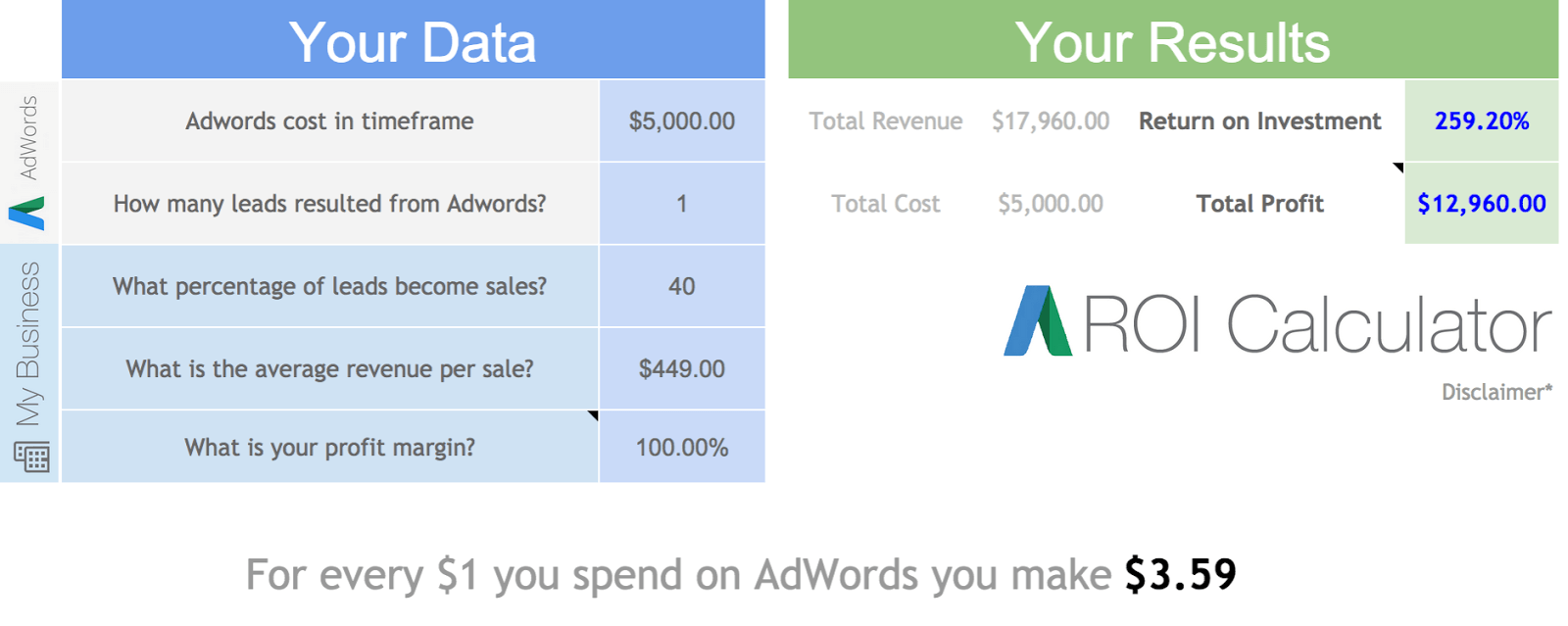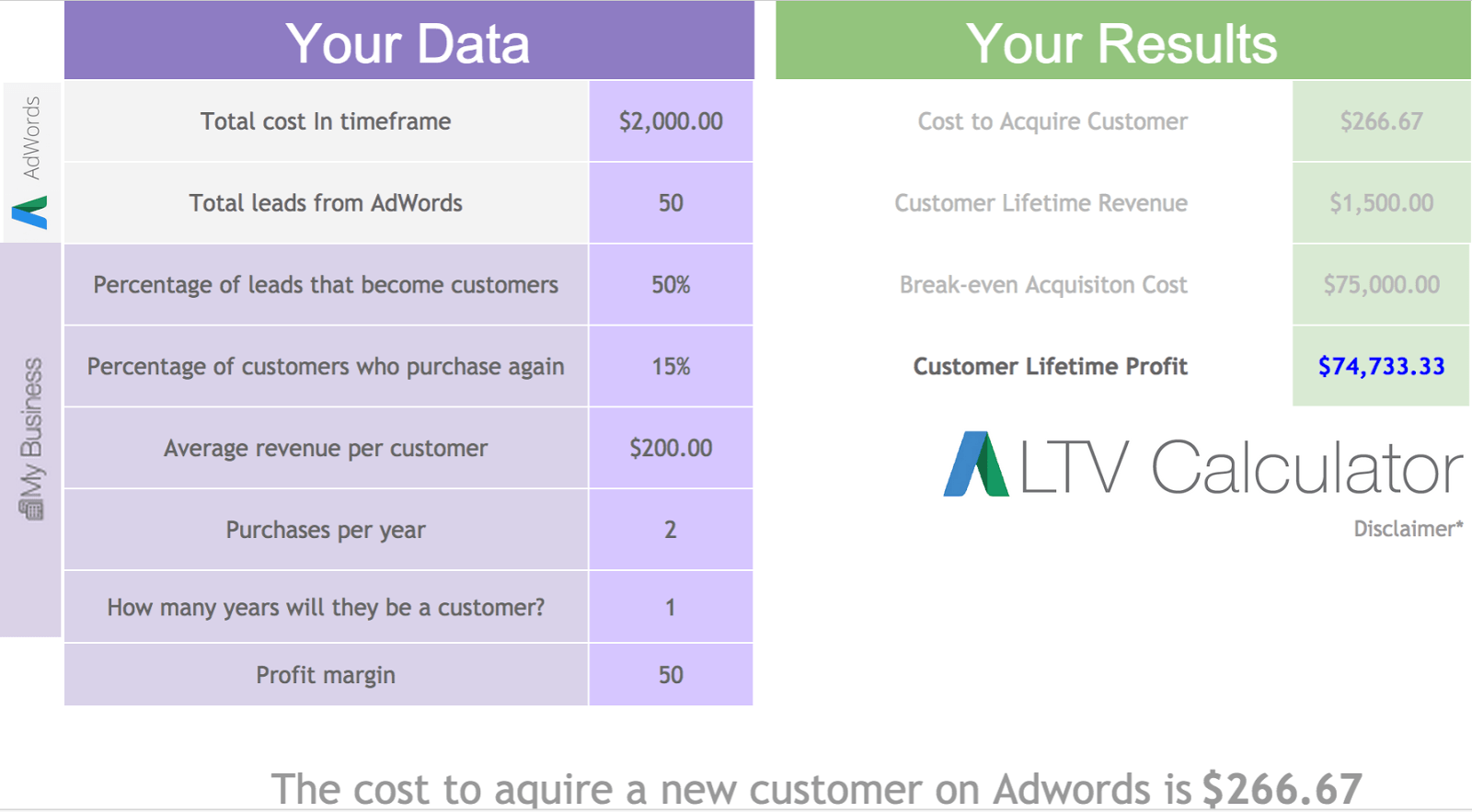[display-name-category]
[post_author]
I recently heard that approx. 92% of all SMB advertisers who don’t work with an AdWords agency, either pause or cancel their first Google Ads campaigns, because the performance fails to meet their expectations.
Of course, there can be multiple reasons for these failed experiences, including poor or just inexperienced campaign management. However, I’m here today to argue that there might very likely be another cause of these cancellations.
Every day I also come across paused pay-per-click advertising campaigns where advertisers fail to attain sustainability. However, in many scenarios, I’d say it’s because they do not have a profit-driven marketing approach.
There is More to a Profitable AdWords Campaign Than Most Marketers Acknowledge
Gone are the days where marketers can quantify clicks, traffic, and bounce rates to measure their marketing success. With the evolution of digital marketing and the ability to track every penny spent, many advertisers tend to optimize and interpret the viability of their marketing investments by reviewing conversions and conversion rates which are at the fingertips of every marketer’s campaign performance dashboards.
Nonetheless, in today’s competitive marketing landscape with multiple touchpoints and complex purchase funnels, you can’t only attribute first-time conversions and revenue to your return-on-investment (ROI) calculation. You gotta consider the relationship with your clients i.e. The Customer Lifetime Value (CLV).
After all, you’re not just looking for a one-night stand with your customers, right?

What Goes into Lifetime Value per Customer
CLV is probably the most overlooked metric in marketing even though it’s fairly easy to calculate.
Instead of only looking at the immediate revenue generated for new client acquisition, you also want to factor in the following:
-
Avg. sales ticket or spending rate per customer
-
Amount of purchases they make per year
-
Retention or loyalty of your customer i.e. how many years they stick around
-
The referral value or word-of-mouth multiplier (WOMM)
The basic formula for calculating CLV is:
CLV = (average purchase value) × (number of repeat purchases) × (average retention time) X (word-of-mouth multiplier)
Let’s make an example with a local marketing campaign for a men’s hairdresser in Miami. This is not your overpriced, high-end, espresso serving hair salon, nor a “Don’t Mess with The Zohan” kinda barbershop, just your regular around the corner walk-in men’s hairdresser, who charges $29 flat for a quick haircut.
If you were to set up a local Google AdWords marketing campaign for this hairdresser, with cost-per-click (CPC) ranging between $3-6 for this vertical in Miami, many marketers would be quick to jump the gun on the campaign, and deem the campaign unsustainable; that is unless the click-to-call ratio was unrealistically high upwards 70-80%.
After all, if you’re paying $6 per click, and if less than half of this traffic calls for an appointment or stops by, it’s hard to justify this high cost-per-acquisition (CPA), especially when you also have to consider overhead expenses, salaries and more.
You’d probably find yourself asking: What’s the purpose? We are barely breaking even after doing your math:
$6 CPC x 25% lead-conversion-rate (LCR) = $24 CPA vs. 29$ revenue – $18 avg. cost per haircut to cover for rent of shop, equipment, salaries, etc. = (-$13) loss
With this calculation in mind, it’s clearly a non-successful marketing campaign and business, of which Shark Tank’s Kevin O’Leary quickly would give a “You are dead to me” remark.
Well, let’s try to look beyond the first time conversion and revenue, and also contribute the Lifetime Value per Customer:
$24 CPA vs $29 first time revenue x 4 hair cuts annually x avg. customer retention of 2,5 years x 1,2 WOMM – cost per haircut = $132 profit
As you can see, the big picture changes radically once you start considering customer loyalty, brand value, and something as powerful of word-of-mouth.
I recommend you try working with these ROI and CLV sheets, of which Joe DeMike from Google shared with me last year at the Google AdWords Premier SMB Partner Summit.

Is Future Profit Worth More than Valuable Cash Now?
Revenue is King and cash is God! This statement particularly holds water if you’re a regular SMB and not categorized as the next hot Silicon Valley startup, with a multi-million dollar valuation to its name.
After all the reality is that growing your business cost money, a lot of money and cash-flow is one of the biggest challenges business owners face.
Therefore, many small business advertisers might argue that it would be financial suicide to measure your marketing campaigns with this long-term mindset.
After all, there’s a dollar inflation rate to consider and risk factors associated with long-term investments when seeking expected future profits, right? Well, at the same time many companies with little to zero revenue are being acquired every day for millions of dollars, based on a fixed dollar rate per customer. Do I need to mention some?
Every Business is Different and So is the Value per Customer
Let’s look at another example and from a SaaS business model where customer churn and a high cost-per-acquisition, essentially kills many ventures.
A bootstrapped startup, let’s call them ‘XYZ Productivity App‘ is running a Google AdWords campaign with CPC’s as high as $15-20, for relevant search queries.
With a high volatility business model, their top-selling application at $19 a month looks like a deadly cocktail with this marketing venture. Especially when their click-to-conversion rates or sign-ups occur in only 12.5% of all visits.
$20 CPC x 12.5% lead-conversion-rate (LCR) = $160 CPA vs. 19$ revenue – $6 avg. cost per download to cover support, security, admin, product development, etc. = (-$135) loss
However, then again let’s look at the entire customer life cycle and run the calculation for 3 years after 100 new clients are acquired through Google AdWords by spending $16.000:
-
Purchase value = $19 per month
-
Net profit per purchase = 70%
-
Number of repeat purchases = 12 per year
-
Average retention rate = 100% year 1 and 80% for the next 2 years
$16.000 marketing cost for 100 new clients vs 100 clients x $19 x 12 payments year 1 + 80 clients x $19 x 12 payments year 2 + 64 x $19 x 12 payments year 3 – avg. $6 cost per subscriber per month = $22.064 profit
Takeaways and Next Steps
The fact of the matter is that search engine marketing probably is one of the most cost-effective and scalable marketing channels available nowadays, why it should also work for your business.
But besides contracting a professional agency to help you crack-the-code with your digital marketing, you’d also make your analysis according to the above-mentioned methods. This will help you determine exactly how much you’re willing to spend/invest in new client acquisitions, for the sake of growing your business.
To get started with your profit-driven marketing approach you need:
-
Insights into your sales cycle and purchase behaviors
-
Access to your marketing analytics and cost associated
-
Overview of your operational cost structure
-
Exports from your CRM about your customer data
Knowing the customer lifetime value will also allow you to see just how much you can discount your services. It will also help you avoid the potentially disastrous effects of discounting too much for more sales volume when in reality it’s draining your cash flow and killing your business.
Enabling your marketing agency with deeper insights into your customer life cycle along with the specific economic values will empower them to perform substantially better and essentially help you grow your business towards profits and happiness.






